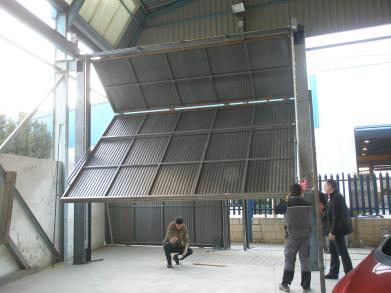

Force and resistance - key tests for automatic doors

Testing is a fundamental element in the manufacture, maintenance, motorisation and installation of automatic doors, as shown in a webinar organised by CEportal. Conducting and documenting these tests is the most effective way for companies to demonstrate the regulatory compliance of a new or modified door for an inspection, as well as being a legal requirement. The most important tests should measure operating force and wind resistance.
Commercial, industrial and garage doors must be tested to confirm their claimed features and to comply with the safety requirements established in the applicable regulations, said Carlos Marquez, Technical Manager of CEportal, during a webinar which was watched by hundreds of professionals in the sector. This testing must be recorded in documentation which is incorporated into the technical testing records (initial type testing) for new doors and substantially modified doors, as well as being part of Factory Production Control (FPC), since it is one of the most commonly requested elements in door inspections by the competent authorities.
Tests that need to be carried out on new automatic doors include “tests for resistance to wind load, safe opening (for vertical lift doors), mechanical resistance and durability, and operating force (for motorised doors)”. Other tests for doors include “water tightness, release of dangerous substances, thermal resistance (if applicable), air permeability and geometry of glazing/glass components, as well as durability of water tightness, thermal resistance and air permeability to wear and tear”, but these characteristics are less frequently declared for commercial, industrial and garage doors.
Choice of model
Before the initial type testing can be carried out prior to marketing new doors, the door model must be determined based on various aspects. First of all, the type of door must be considered: “sliding, swinging, folding, roll-up, up-and-over, etc”. Then, “their characteristics and maximum dimensions, finishing, components and type of activation, user and environment” must be taken into account.




